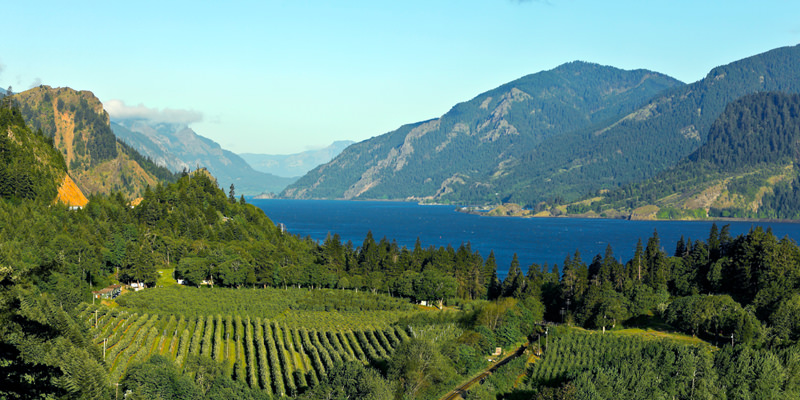
The trouble with wine is that every bottle feels like a gamble. Unless you’ve got the privilege to only buy what you’ve tasted, the contents of a bottle are elusive. That leaves most of us gaping at shelves and menus like zombies, left guessing what bottle will best satisfy the mood of an evening or food pairing. Add in elements like vintage variation, winemaking style, and blending, and even brand-name wines challenge the most educated consumers.
Wines from the Pacific Northwest, however, defy those challenges. The third- and fourth- largest wine producers in the United States, Oregon and Washington boast steady, reliable climates that yield wines that are wonderfully consistent, both in terms of flavor and across brands and vintages. That translates to dependable wines and ease at the store, because these wines taste similar each and every year, and from brand to brand. When it comes to value in winemaking, reliability is a cornerstone.
Millennia of conspiring by Mother Nature’s various components led to the development of this region’s consistency, and now we get to drink the results. Thousands of years of volcanic eruptions, moving glaciers, and plate tectonics contributed to the Pacific Northwest. Then the Missoula floods cascaded down from Montana, carving the landscape and depositing silt across huge swaths of Washington and Oregon. This soil, known officially as Warden Silt Loam, forms the soil basis for terroir in the Willamette and Columbia Valleys. While differences exist, the consistency of certain minerals in these soils gives Oregon and Washington wines a commonality that other regions don’t share. In Napa Valley, for example, soil types change dramatically over short distances.
In addition to soil consistencies, stable weather patterns in the Pacific Northwest give vintners the opportunity to make great wines every year. In Washington, the Cascade mountain range provides a barrier from Pacific storms and makes the Columbia Valley one of the driest wine-growing regions in the country. The area is desert-like, forcing most wineries to irrigate. That dryness, however, prevents damaging rain during harvest. It also prevents the humidity that causes rot and mold in other prestigious regions, like Bordeaux.
In Oregon, those same mountains keep rain and humidity on the western side of the state, where most wineries are concentrated. Wines from the six AVAs of Willamette Valley are very different from those of Eastern Washington, but the consistency of terroir is the same. The Columbia Gorge and Valley extend into both states, meaning the Warden Silt Loam and consistency of soils do, too.
In this cool locale, extreme temperatures are rare and rainfall comes steadily during the winter months, when it doesn’t harm vines or cause mold and rot on grapes. Oregon wines are also subject to strict quality regulations that prevent misleading labeling on bottles that name a region or grape variety. Designed with clarity for consumers in mind, these regulations add an extra element of trustworthiness to Oregon wines.
Whether dry or wet, a stable climate means less vintage variation, and those soils mean more similarities between wines. Put that together and you’ve got a recipe for regional stability. In short, wines from Washington and Oregon taste alike! Columbia Valley Rieslings are similar enough to be interchangeable, and many Cabernet Sauvignon brands offer the same reliability. While minor aromatic and taste differences will always exist, Pinot Noirs and white wines from Oregon offer the same dependable (and delicious) qualities.
All the climatic factors that make Oregon and Washington wines reliable translate directly to value for all as drinkers. The trifecta of climate, flavor, and price makes these bottles safe bets, regardless of brand name or vintage. Happily, reliability isn’t synonymous with boredom, and there are plenty of varieties and subregions to explore comfortably.

